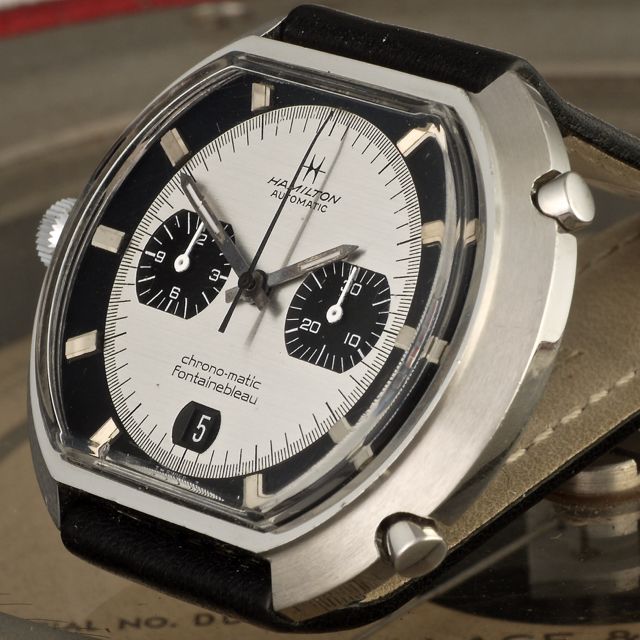
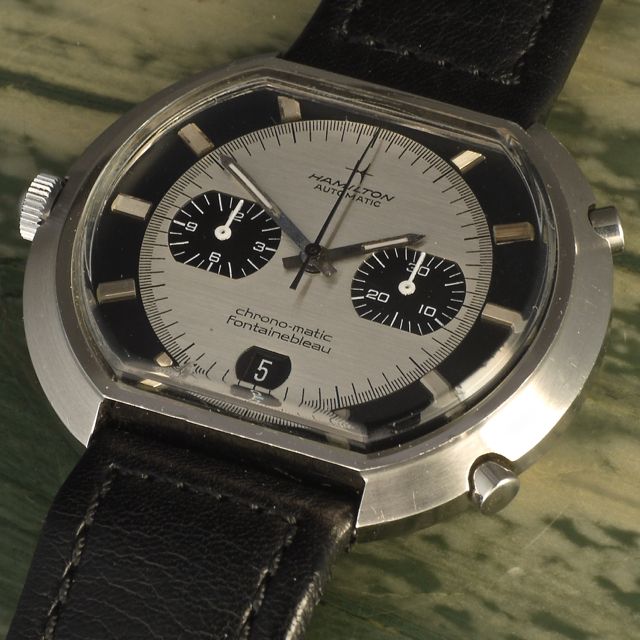
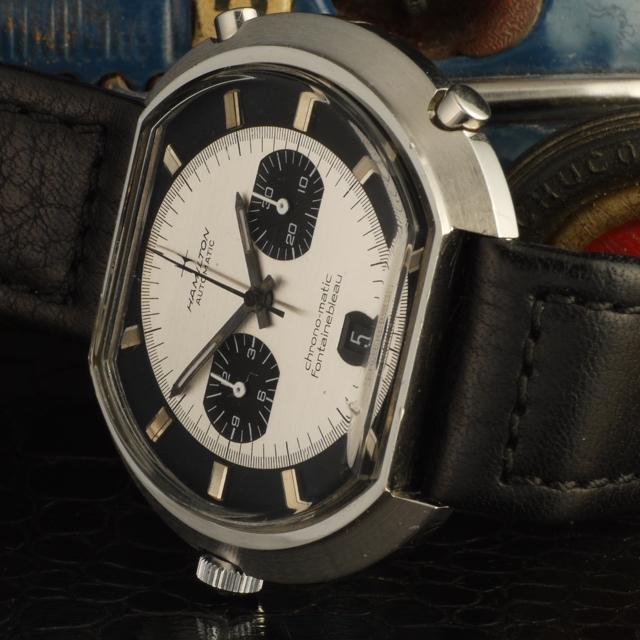
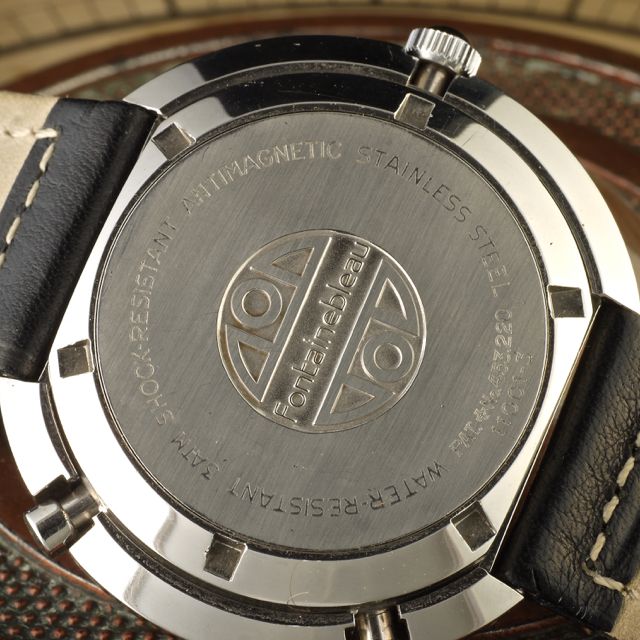
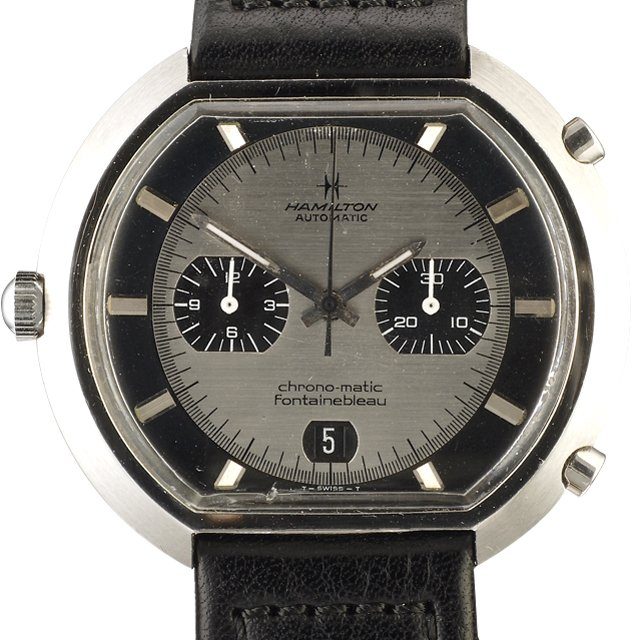
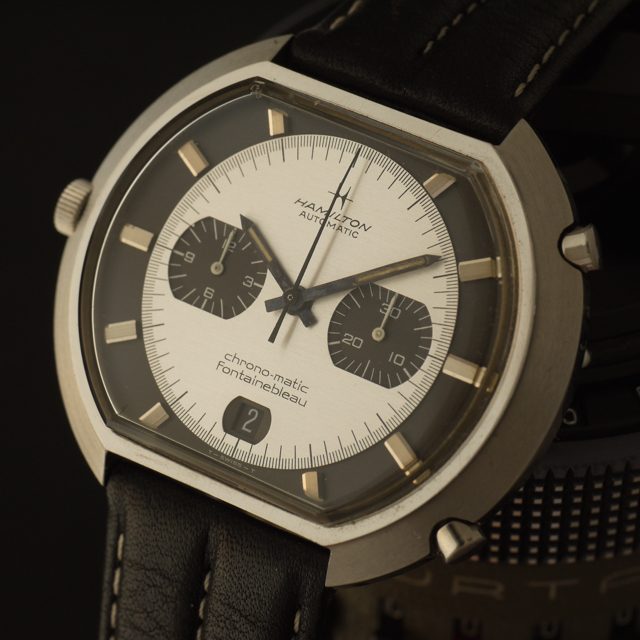
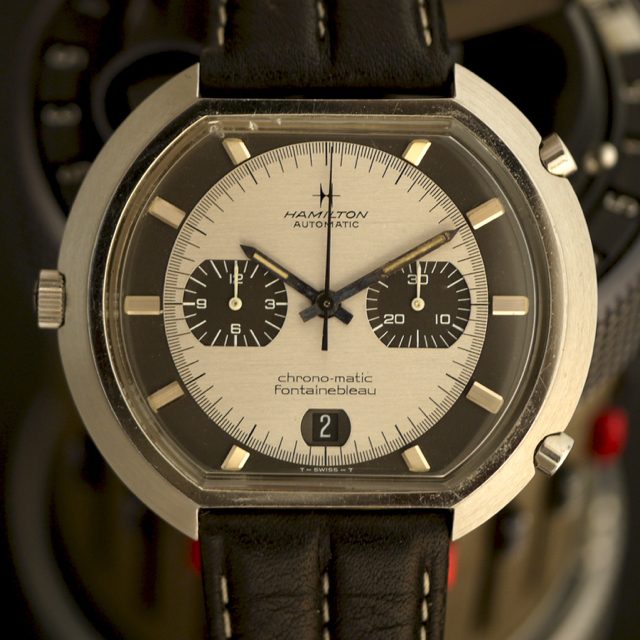
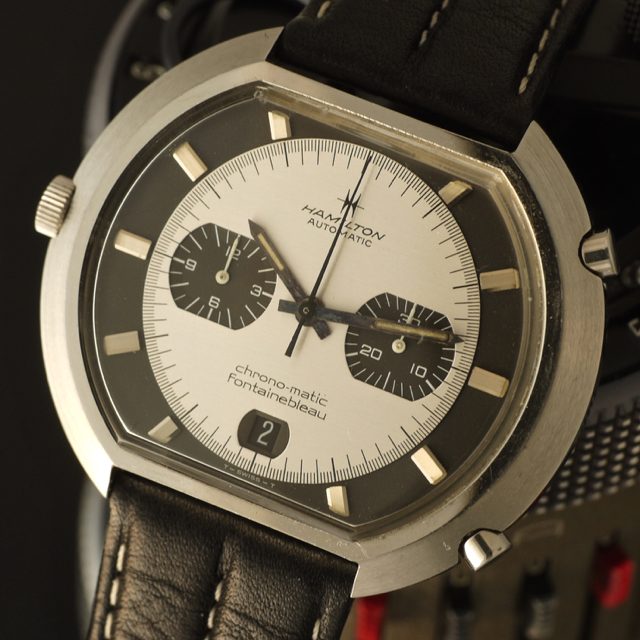
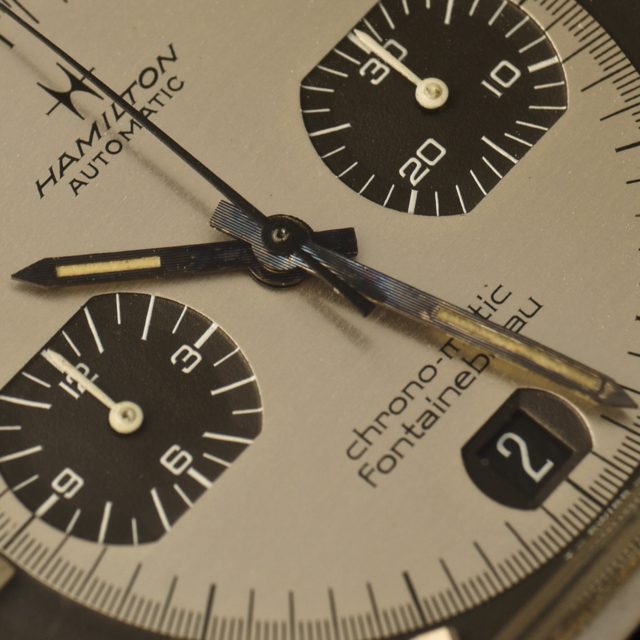
Hamilton Fontainebleau Chrono-matic
The scanning electron microscope is developed1969 Hamilton Fontainebleau Chrono-matic ref. 11001-3
The Fontainebleau Chrono-matic ref. 11001-3 is the only Fontainebleau model which used the caliber 11.
The movement is based on the Buren 1282 with micro-rotor and was not designed to attach a chronograph mechanism – this led to the crown at 9 o’clock. While the el Primero has survived until today, the expensive design made this movement a victim of the quartz boom. Consequently, the number of these watches with the crown on the wrong side is pretty low.
In 1966, Hamilton acquired the Buren Watch Company of Switzerland, including all factories and technologies that had been developed by Buren up to that point. From 1966 to 1969, Hamilton Lancaster and Buren Switzerland were operated as a joint concern, with Hamilton using a number of Swiss movements for their “American” watches and Buren utilizing a number of components manufactured by Hamilton Lancaster. This is a joint development of Hamilton-Buren, Breitling, and Heuer. It should become the first self-winding chronograph but cal. 11 was introduced in March 1969, two months later than the El Primero from Zenith.
The Hamilton Watch Company was an American company that was incorporated in 1892. In 1971 it became the third company of what was later to become the Swatch Group, the world’s largest watch manufacturer and dealer.
During the expansion of the railroads in the U.S., Hamilton maintained over 56% of the market. Railroads purchased all of Hamilton’s production. As the market switched from pocket watches to wrist watches after World War I, the company manufactured wrist watches.
During World War II, Hamilton retooled its business model to serve the military and production of consumer watches was stopped. With all watches manufactured being shipped to troops, more than one million watches were sent overseas.
The company also was extremely successful in producing Marine Chronometers and Deck watches in large numbers to fill the needs of the United States Navy, and other Allied navies.
